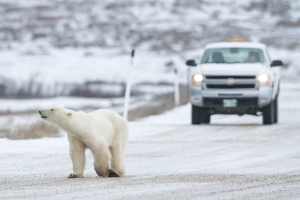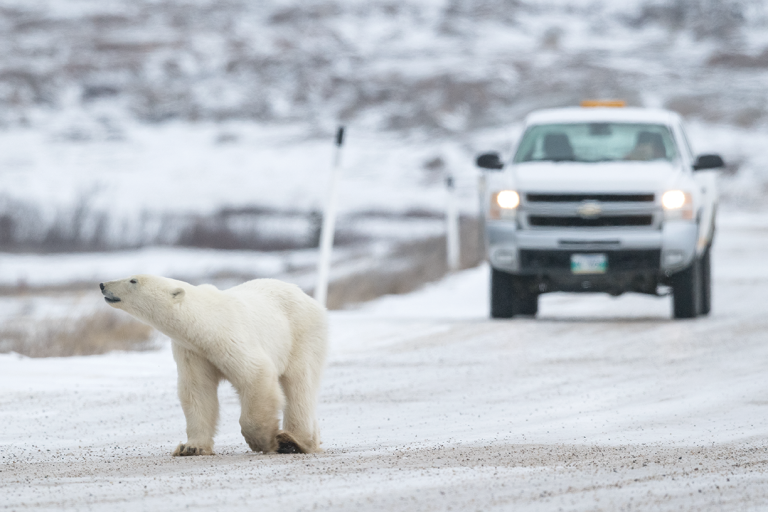
Wildlife
Think like a bear: learning to coexist
Humans and bears are sharing more landscapes now than ever before. As we continue to invade their world, will we be able to coexist?
- 4432 words
- 18 minutes
This article is over 5 years old and may contain outdated information.
Wildlife

The infamous bear F148—a female grizzly whose activities have been monitored via GPS collar since 2014—has been re-collared for a third time as researchers continue to look for ways to help Alberta’s threatened grizzly population.
F148’s first collar was part of a project between Parks Canada and CP Rail aimed at decreasing the number of bears killed in collisions with trains. The five-and-a-half year old grizzly became a subject of particular fascination to researchers as they tracked her movements only to discover that she is disconcertingly habituated to humans.

The above map, originally published in the April 2015 issue of Canadian Geographic, shows F148’s movements during a single week in July 2014 when she trekked more than 60 kilometres over territory between Banff and Sunshine Village, at one point meandering up 2,473-metre Harvey Pass to forage in an isolated alpine basin northwest of the Sunshine Village ski area, but ultimately returning to Banff via the Trans-Canada Highway.
At several points, F148 crossed the highway and the CP rail tracks — both hot spots for bear deaths — and her collar has tracked her to campsites and golf courses on more than one occasion. While this tendency to hew close to human settlements has researchers concerned for both F148’s safety and the public’s, it’s valuable insight into the animal’s behaviour. That will ultimately help officials create habitat and infrastructure to protect both grizzlies and people.
For example, nearby Canmore created designated wildlife corridors so animals can move safely through the town, a garbage management regime is in place, and the WildSmart program teaches residents how to share their environment with bears.
“The uniqueness of Banff and the immediate Bow Valley area is that folks move there to coexist with nature,” Courtney Hughes, a doctoral candidate at the University of Alberta studying social tolerance for grizzlies, told Can Geo last year.
“They’re keen to adopt mitigation measures so the species can persist.”
Related: What’s behind the rise in grizzly bear deaths from train collisions?
Vanessa Hrvatin contributed reporting to this story.

Wildlife
Humans and bears are sharing more landscapes now than ever before. As we continue to invade their world, will we be able to coexist?

People & Culture
Depending on whom you ask, the North’s sentinel species is either on the edge of extinction or an environmental success story. An in-depth look at the complicated, contradictory and controversial science behind the sound bites

Wildlife
Salmon runs are failing and grizzlies seem to be on the move in the islands between mainland B.C. and northern Vancouver Island. What’s going on in the Broughton Archipelago?

Wildlife
An excerpt from Gloria Dickie’s book, Eight Bears: Mythic Past and Imperiled Future, which explores the planet’s eight remaining species of bears and the dangers they face

People & Culture
Depending on whom you ask, the North’s sentinel species is either on the edge of extinction or an environmental success story. An in-depth look at the complicated, contradictory and controversial science behind the sound bites

Wildlife
Humans and bears are sharing more landscapes now than ever before. As we continue to invade their world, will we be able to coexist?